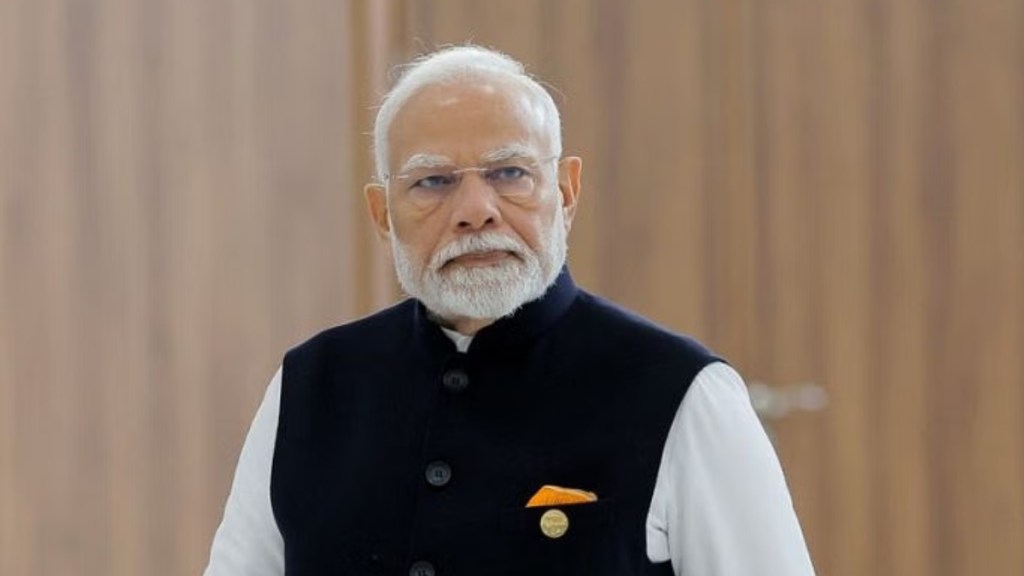By all accounts, every power is concentrated in the hands of Mr Narendra Modi. He may deserve to claim sole credit for the government’s achievements; he should also bear sole responsibility for its failures
There is never one correct point of view. Albert Einstein’s theory of general relativity was questioned by eminent scientists, among them Jayant Narlikar. As long as there is no ill-motive, every point of view has some truth and must be respected — a quality that the present government has not cultivated in the last 11 years.
Mr Narendra Modi has just completed 11 years in office, making him the third longest-serving prime minister of India. That is a testimony to his tenacity and ability to win elections for his party.
There are pluses and minuses in every government, and the NDA government is no exception. Mr Modi’s government relies on metrics: in a developing country, the usual economic metrics can only add to the stock. If schools are built or roads are constructed, it will add to the stock of schools (in number) or roads (in kilometres). However, the people’s standards for assessing a government’s work are different: they are based on an unquantifiable metric called ‘good governance’. Under good governance, the country is seen as a better (for all), stronger and fairer place and the individual is satisfied that his family’s life will become even better. The quality of governance cannot be fully discerned in quantitative metrics.
In my assessment, India is not better for all or stronger or fairer place today than what it was in 2014. Besides, while the lives of millions have become better, the lives of many more millions are blighted by uncertainty, poverty, unemployment and fear.
Is India better for all?
Economic reforms and liberalisation were launched with the objective of raising India’s growth rate. In the 10 years under UPA (2004-2014), the average GDP growth rate was 7.46 per cent (old series) and 6.7 per cent (new series). After 2014-15, and especially after 2019-20, the official data point to a slowing down of the growth rate. 2024-25 too has witnessed modest growth. The compounded annual growth rate (CAGR) of real GDP since 2014-15 was 6.1 per cent; since 2019-20, the CAGR has fallen to 5.1 per cent. Agriculture, industry and manufacturing have recorded a deceleration and are under 5 per cent. It is only ‘services’ that has grown at 5.4 per cent.
The key to a better life of the vast population is the per capita income of the people, not the size of the nominal GDP. Under the UPA government, the per capita income more than doubled in 10 years; it actually increased 2.64 times from USD 543 to USD 1,438. Under the NDA government’s first 10 years, it increased by only 1.89 times from USD 1,438 to USD 2,711, and it doubled to USD 2,878 only in the 11th year. At this level, India ranks 136 out of 196 countries. India has missed by a wide margin the target of growing at 8 per cent for a sustained period of 20 years in order to reach the threshold of a developed country (per capita of USD 14,000).
Is India a fairer place?
Apart from the growing inequality among the rich/uber-rich (the top 20 per cent) and the very poor (the bottom 20 per cent), there is a pervasive sense of fear and insecurity. Besides, there is abundant evidence of assertive majoritarianism, growing communal and caste strife, virulent hate speeches and writing, unashamed crony capitalism, collapse of the criminal justice system, severe fractures in the federal structure, and creeping authoritarianism. Two examples will suffice: (1) the weaponisation of laws from Income-tax Act to Prevention of Money Laundering Act to achieve political ends and (2) the callousness of investing Rs 1,08,000 crore on a bullet train project between Ahmedabad and Mumbai when 29,970 persons died and 30,214 were injured between 2014 and 2025 in the fund-starved Mumbai suburban train network.
Is India a stronger country?
I refer to ‘strong’ in the sense of unity, friendly and cooperative relations with neighbouring countries, secure borders, capable armed forces, cordial diplomatic and trade relations with countries of the world, and a honourable standing in international organisations. After the terrorist attack in Pahalgam and Operation Sindoor, the weaknesses were exposed. India did not send delegations to the neighbours such as Sri Lanka, Myanmar, Bangladesh, Bhutan, Nepal, Afghanistan, Maldives or Mauritius; nor did these countries speak publicly.
Many countries condemned the terrorist attack but no country condemned Pakistan as a sponsor of terrorism. India’s presumed advantage over Pakistan in a conventional war has come under a cloud. Despite the foundational agreements and QUAD, the United States imposed tariffs on Indian goods and hyphenated India and Pakistan. Despite being one of only 25 members of the IMF Executive Board and of the World Bank Board of Directors, both bodies voted large loans to Pakistan after Operation Sindoor. India fought the four-day war using mainly French, Russian and Israeli military hardware. India may be strong but not as strong as we believed.
By all accounts, every power is concentrated in the hands of Mr Narendra Modi. He may deserve to claim sole credit for the government’s achievements; he should also bear sole responsibility for its failures.
When I ask myself ‘Am I proud to be an Indian?’, the answer is yes. When I ask myself ‘Am I happy with the way India is governed?’, the answer is no. I look forward to the day when India will become a better (for all), stronger and fairer country.

